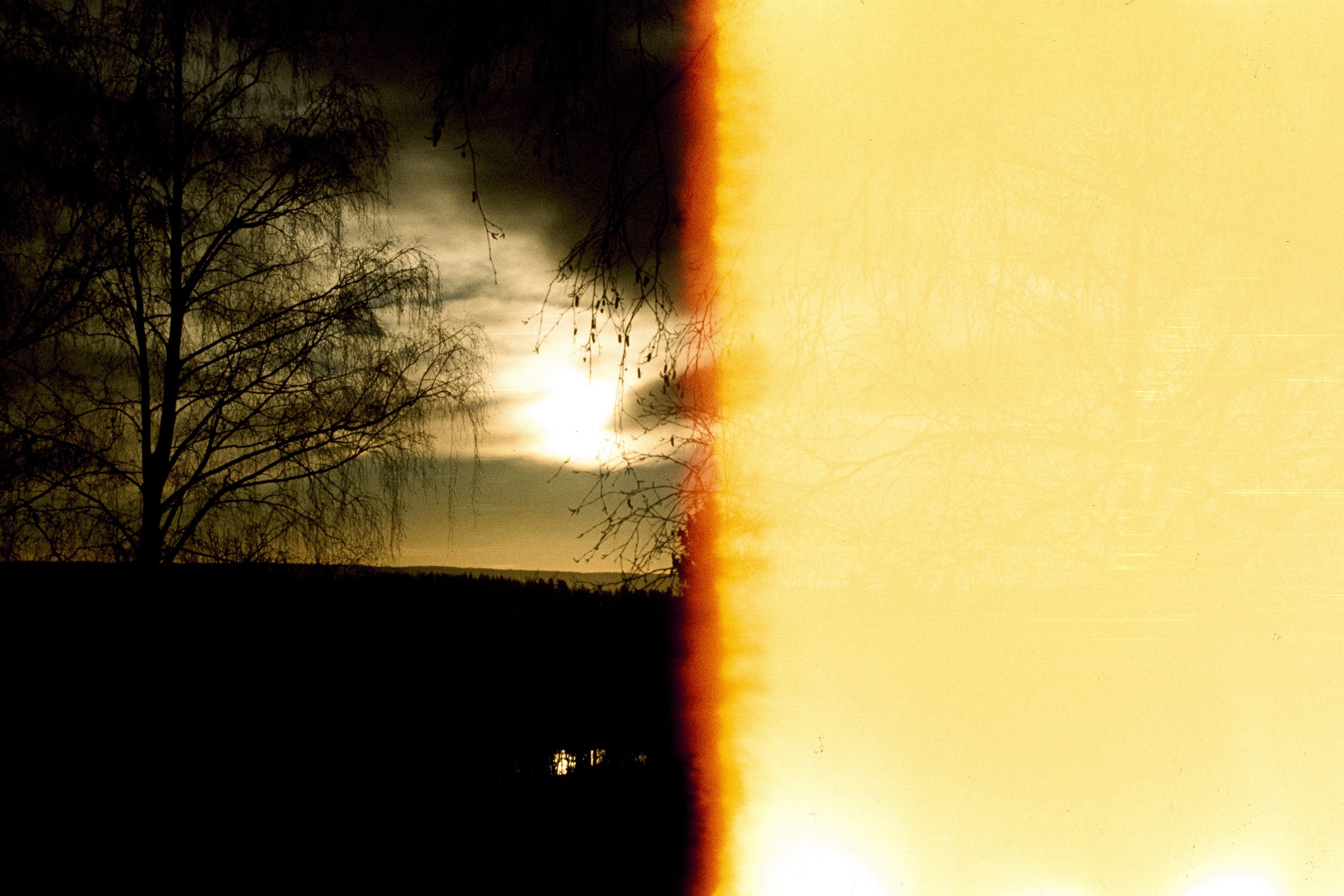PETER WESSEL ZAPFFE
Afterimage by Marius Eriksen:
In an envelope from the Asker photo service - dated 18 November (the year is unknown) - found in his study, there were a few strips of positive film that Peter Wessel Zapffe, or his wife Berit, had delivered to re-order some prints. The first photo on the film was taken from the second floor of the house in Asker, depicting the sun setting over Nordre Follo. The next two photos are of the garden. In addition, Zapffe has photographed a class photo from when he graduated from high school in 1918, as well as a newspaper clipping from the time he climbed up into Tromsø Cathedral and proclaimed that he couldn't get any higher with the help of the church. The next time he uses his camera, it's winter. He points the camera at an overgrown, snow-covered garden.
There is a photographic-aesthetic approach to the issues that preoccupied Zapffe. And it is here that the centre of gravity of this book is to be found. His photographic archive is of almost staggering proportions, both qualitatively and aesthetically. I was struck by how Zapffe's pessimistic view of life seemed to crack precisely because of his photographic enthusiasm for magnificent landscapes, towering peaks, family, friends, animals and plants. It is ironic that Zapffe felt that nature's intrinsic value was independent of our participation, when he himself was so present in his subjects. After all, wouldn't the qualities of beautiful and magnificent nature disappear without our presence? Such anthropocentric thinking was far from Zapffe's mind. Perhaps he was not entirely consistent, but the principle was there: The magnificent and the beautiful will not disappear even if man disappears. An uninhabited planet was no accident, he argued.
This is from the book Et Stormkast Vækker Os av Dvalen (A gust of wind wakes us from our slumber) by artist Marius Eriksen. In the book, Eriksen engages in a photographic dialogue with the Norwegian philosopher Peter Wessel Zapffe (1899-1990).
